Summary- The Northwestern region of the country has seen strong economic growth over the last five years.
- As a result, most of the publicly-traded utilities have seen increases in their revenue numbers.
- NorthWestern Corporation (NYSE:NWE) is the cheapest on a forward PE basis, has the highest dividend and its stock has outperformed its nearest competitor.
- This idea was discussed in more depth with members of my private investing community, Turning Points.
The Federal Electric Regulatory Commissions divides the country into the following electric markets:

This article will focus on NW utilities. It's easy to overlook this area of the US; several of the states are sparsely populated and the region is geographically out-of-the-way. But don't let that fool you; what they lack in population, they make up for in geographic space and economic growth. Here's a chart of the state-by-state annual GDP growth for the last five years:
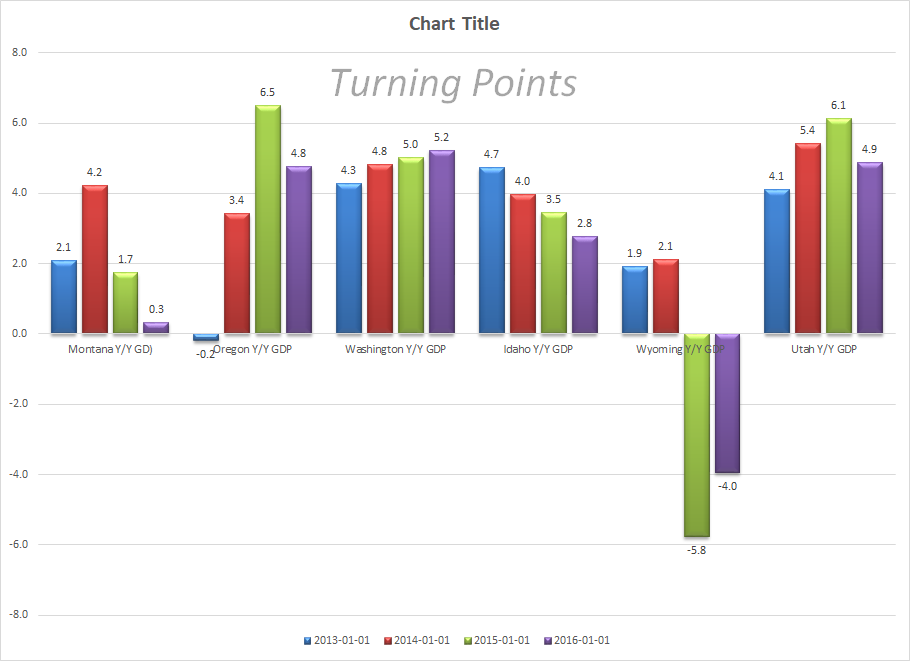
(data from the BEA; authors chart)
Oregon, Washington, Idaho, and Utah have all experienced solid growth over the last four years. Wyoming's growth declined sharply in 2015 and 2016 thanks to the decline in oil prices and the subsequent drop in fracking activity. Montana's growth was somewhat weaker in 2016 but still positive.
More recent activity has been positive:
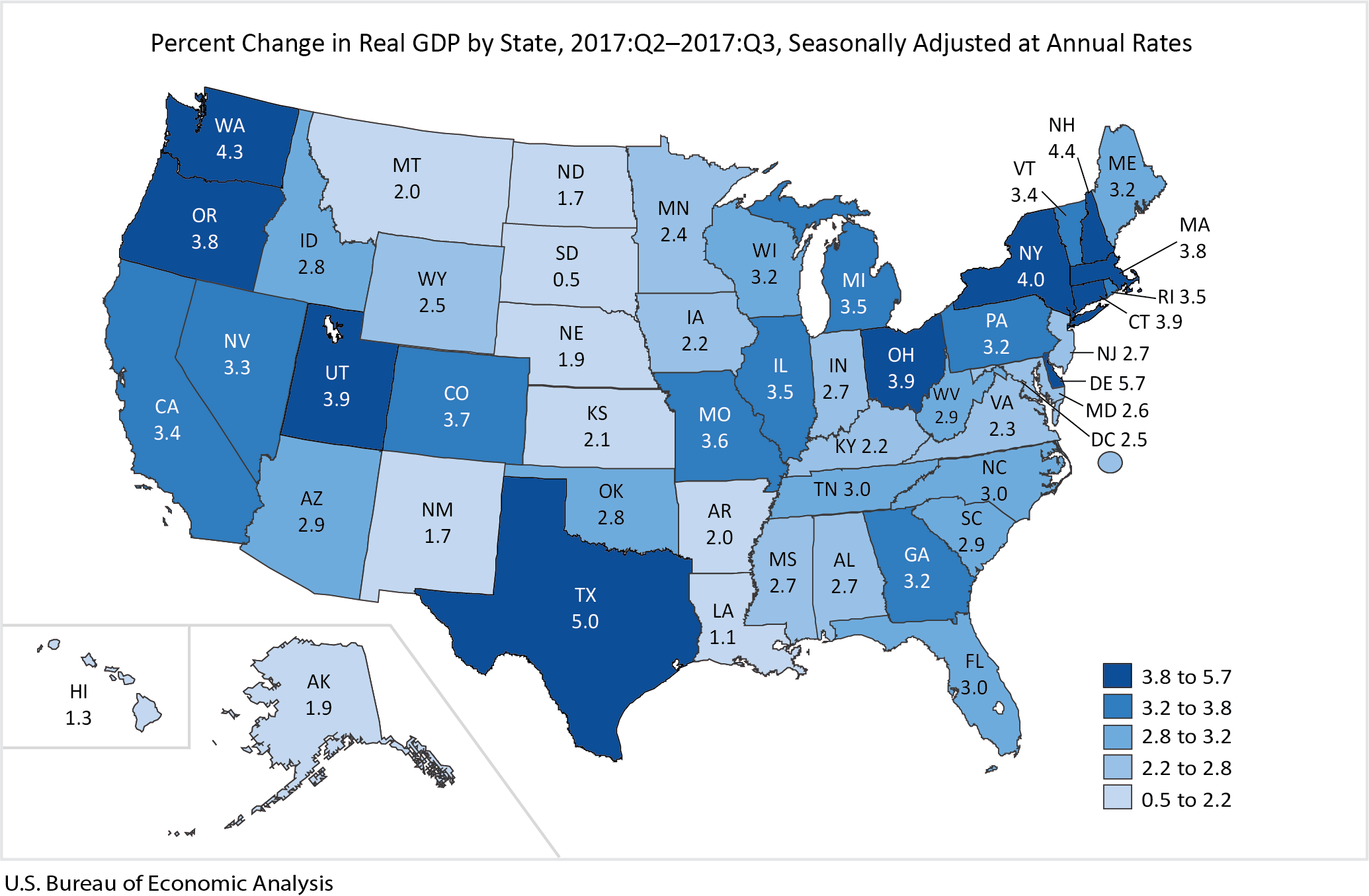
(data from the BEA)
Like all businesses, utilities have a better chance of growing when the underlying economy is advancing. In the case of a utility, increased economic growth means increased demand for electricity and gas.
The presence of significant hydroelectric generation makes this a unique section of the country:
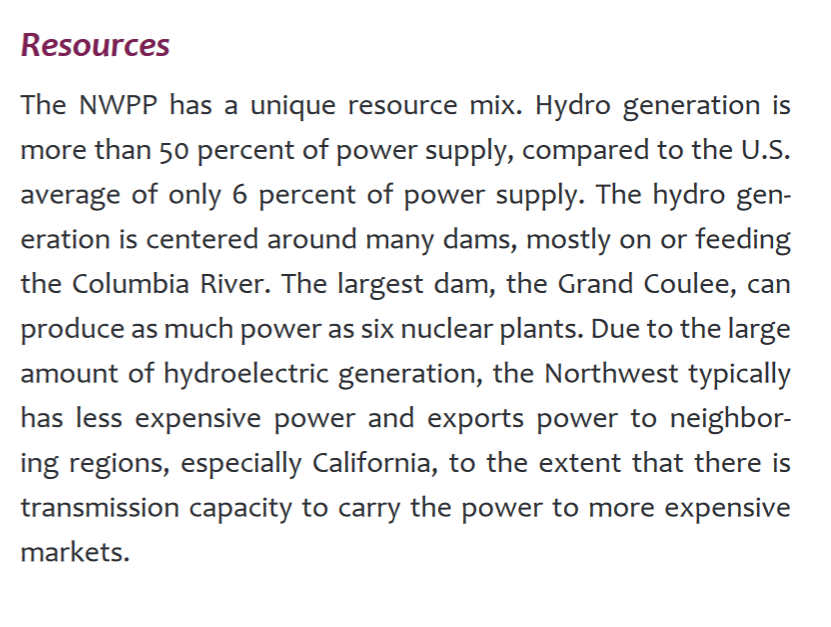
Hydro-electric has two benefits. First, it qualifies as "green," allowing utilities who use this power source to include hydropower in their green energy computations when they're complying with state regulations. Second, it allows encourages green-energy focused investor to become shareholders.
This map from the Edison Institute shows the location of the major utilities:
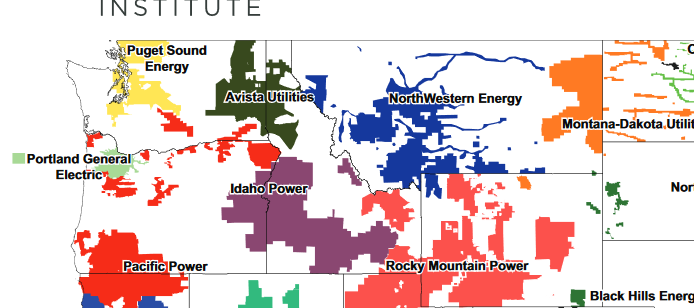
Pacific Power won't be discussed because it suspended its dividend at the end of last year. Montana-Dakota Utilities is part of MDU Resources Group Inc (NYSE:MDU); the utility subsidiary accounts for approximately 50% of the company's revenue. Due to the mix of earnings between a utility and non-utility company, MDU won't be considered. And Avista is currently a takeover target, so it might be disappearing in the near future. Let's start by looking at the remaining companies from a valuation perspective:
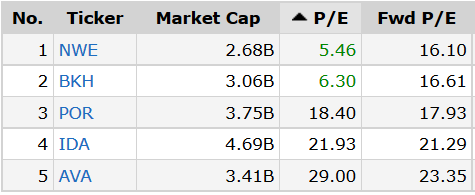
(Table is from Finviz.com; author's custom portfolio)
Both Northwestern Corporation (NWE) and Black Hills Power (BKH) have abnormally low PEs. Both also have the lowest forward PEs, making them the most attractive from a valuation perspective.
The following table shows their respective dividends:

(table from Finviz.com; author's custom portfolio).
Northwest clearly has the highest dividend. Black Hills has the second highest, but just barely. But as I noted in my recent Portland Electric profile piece, that company just raised their dividend 6%, so they won't be increasing their payout anytime soon.
(I have written in-depth articles on Northwest and Black Hills. Below I will present a truncated version of their income statements and stock performance. Please reference both articles for additional details about each company)
Let's next look at the income statement numbers from Northwest and Black Hills, starting wihth NWE:

(data from Morningstar.com; author's calculations)
These are great numbers. Revenue has increased -- something that has eluded most East Coast utilities. The company has grown its margins as well, in some cases handsomely (witness the over 1000BP increase in their gross margin or 400BP+ increase in net margin). They're also increasing EBITDA -- the lifeblood of any utility -- while having ample interest coverage.
Let's turn to the cash flow from their latest 10K
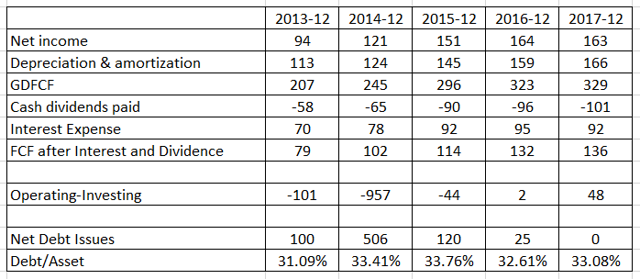
I use two measures of cash flow. The first is derived from one of the earlier editions of Securities Analysis by Graham and Dodd and it only uses two numbers for its calculations: net income and depreciation. The top six columns in the table above show the calculation for this conservative cash flow number. Then I subtract cash dividends and interest payments. For the last five years, the company has had a positive number after performing this analysis, indicating the company has more than enough money to pay creditors and shareholders.
Next, I use the traditional numbers from the cash flow statement and show that, after making all investments, the company has had a positive cash flow for the last two years -- an atypical development for a utility. The last two columns show the company's debt situation: the first column shows they have issued a small amount of debt while the second row shows the debt/asset ratio which is very conservative
Let's take a look at Black Hills numbers:
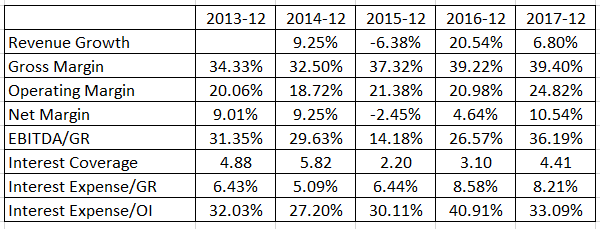
Black Hills has had much better revenue growth. But their gross margin is lower. NWE has almost caught up to BKH's operating margins. And BKH has a lower net margin. Both companies have similar interest coverage ratios.
Despite having better revenue growth, NWE has outperformed BKH on a 6-month basis:

1-year basis:
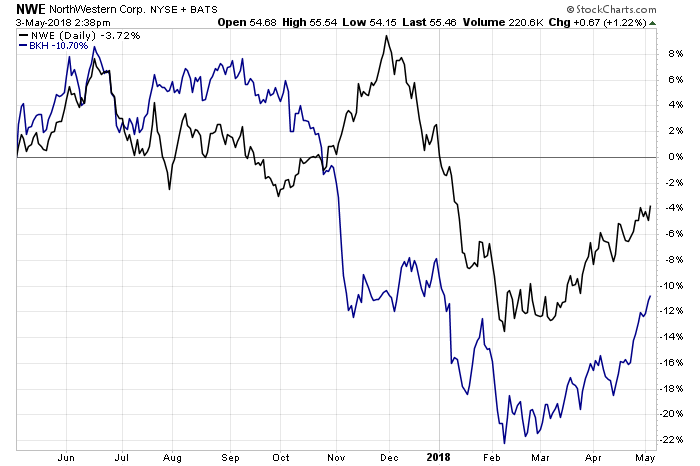
And 2-year basis:
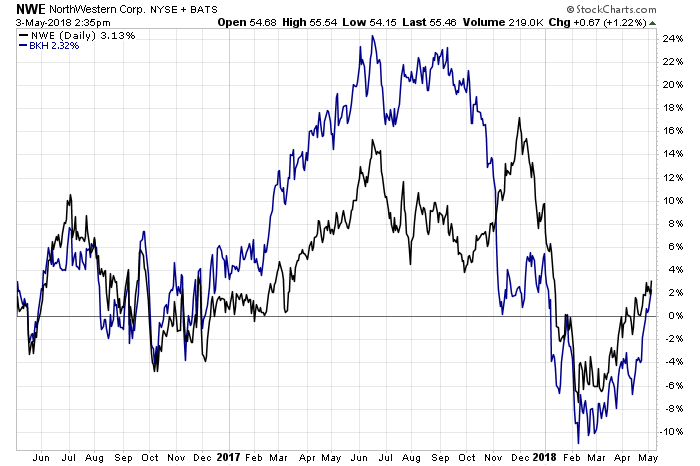
The reason is most likely the higher dividend, which is usually a primary driver of an investor's decision to purchase a utility.
Risks for Northwestern: NWE has a monopoly; they will face no competition. They do, however, face the following two risks:
Weather-related: the company is dependent on hydroelectric power as a power source. This, in turn, is dependent on sufficient water volume. Low summer show-pack means lower water volume, forcing the company to use higher cost power production.
Regulatory issues: utilities face significant regulatory burdens which come from the federal and state authorities. Here is but one paragraph from their latest 10K highlighting just one aspect of the legal burdens faced not just by NWE but all utilities:
Our profitability is dependent on our ability to recover the costs of providing energy and utility services to our customers and earn a return on our capital investment in our utility operations. We provide service at rates established by several regulatory commissions. These rates are generally set based on an analysis of our costs incurred in a historical test year. In addition, each regulatory commission sets rates based in part upon their acceptance of an allocated share of total utility costs. When commissions adopt different methods to calculate inter-jurisdictional cost allocations, some costs may not be recovered. Thus, the rates we are allowed to charge may or may not match our costs at any given time. While rate regulation is premised on providing a reasonable opportunity to earn a reasonable rate of return on invested capital, there can be no assurance that the applicable regulatory commission will judge all of our costs to have been prudently incurred or that the regulatory process in which rates are determined will always result in rates that will produce full recovery of such costs. In addition to rate cases, our cost tracking mechanisms are a significant component of how we recover our costs. Historically, our wholesale costs for electricity and natural gas supply were recovered through various pass-through cost tracking mechanisms in each of the states we serve.
Of the Northwest utilities, take Northwestern Corporation. Management has grown gross revenue and increased margins over the last five years. It has a higher dividend, lower forward PE, and has outperformed its primary competitor over the last 6, 12, and 24 months.
This post is not an offer to buy or sell this security. It is also not specific investment advice for a recommendation for any specific person. Please see our disclaimer for additional information.
It pays to look at the whole picture: not just where markets are headed, but what the economic data tells us about that, and how that can inform our investment decisions.
Disclosure:I/we have no positions in any stocks mentioned, and no plans to initiate any positions within the next 72 hours.
I wrote this article myself, and it expresses my own opinions. I am not receiving compensation for it (other than from Seeking Alpha). I have no business relationship with any company whose stock is mentioned in this article.
